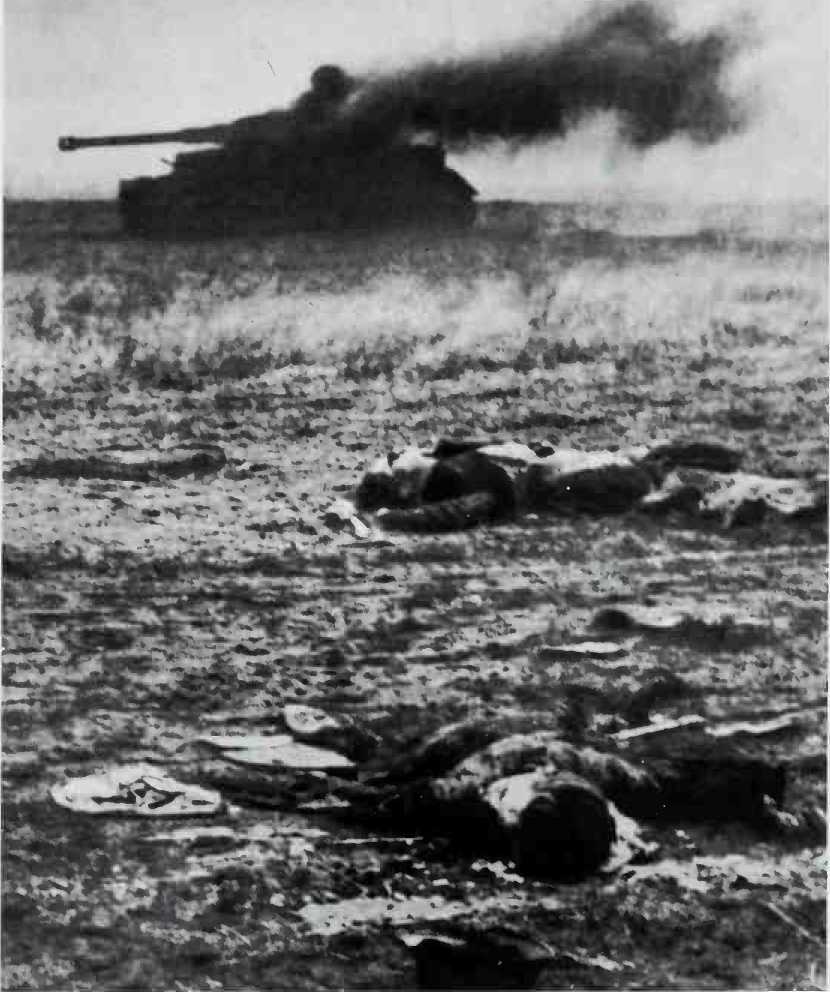In effect, faced with the concentric offensive launched on the South and the SouthWest Fronts, which threatened to involve the new German 6th Army (Colonel-
General Hollidt) in a disaster equal in magnitude to that of Stalingrad, Manstein had decided to evacuate the Donets basin, which would have the additional advantage of shortening his front. Yet Hitler had expressly forbidden such a step, just as he had refused Colonel-General Jaenecke permission to bring his 17th Army back over the Kerch’ Strait into the Crimea, even though its 17 German and Rumanian divisions would have been more useful to the defence of the Donets than the Kuban’ peninsula. Under the circumstances imposed on him, Field-Marshal von Manstein was forced to make a dangerous move: to weaken his left fiank between Belgorod and Sumy so as to strengthen his right in the hope (which was not fulfilled) of being able to make a stand before Konev and Vatutin were able to seize the opportunity offered to them. In fact the transfer of XXIV Panzer Corps (General Nehring) to the 1st Panzerarmee allowed the latter to plug the breach at Slavyansk, and the intervention of III Panzer Corps (General Breith) and the S. S. Panzer Corps gave General Hollidt the chance of inflicting a serious defeat on the South Front, which by July 30 had crossed back over the Mius, leaving behind 18,000 prisoners, 700 tanks, and 200 guns.
On August 3, however, more swiftly than Manstein can have supposed, Colonel-Generals Vatutin and Konev, considerably reinforced in artillery and rocket-launchers, made an attempt to drive a wedge between Gruppe "Kempf” and the 4th Panzerarmee. By the afternoon they were through and had pushed two mechanised armies into the gap. August 5 saw the liberation of Belgorod; on the 7th the Russian 1st Tank Army reached Bogodukhov, nearly 70 miles from its starting point. This breakthrough was now developing in the most dangerous direction for the German forces between the Sea of Azov and Khar’kov: towards Dniepro-petrovsk. And so, to keep down his losses Manstein again switched the Waffen S. S. Panzer Corps and HI Panzer Corps to this front, whilst on the orders of O. K.H. his comrade Kluge gave him back the "Grossdeutschland” Panzergrenadier Division which, on the day after "Zita-delle”, had been engaged in the Orel salient. As we can see, the Panzers roamed all over this immense battlefield from one point of conflagration to another, just as the firemen were doing during the same period in German towns.

A Tiger burns. Ponderous and hard to manoeuvre, they were vulnerable to anti-tank fire from the flank and rear.




 World History
World History









